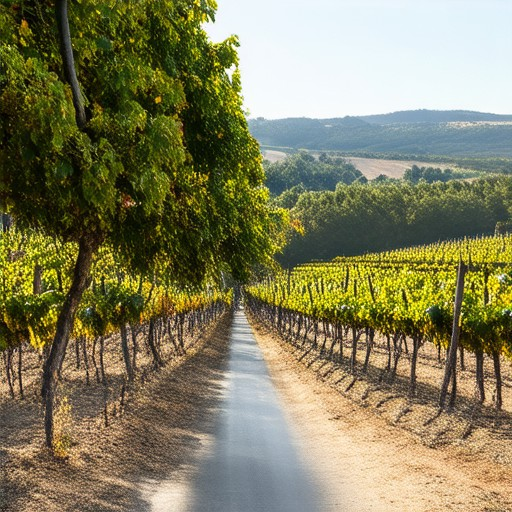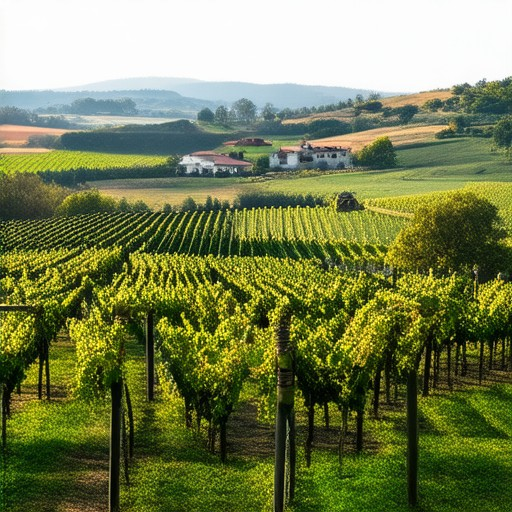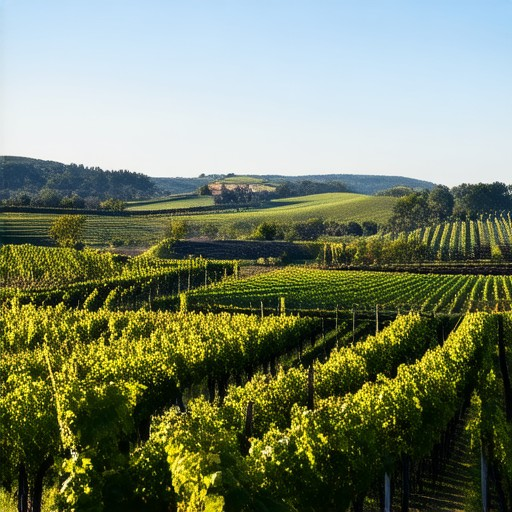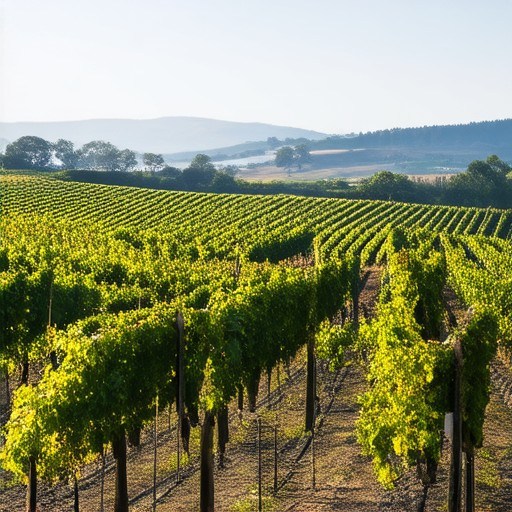The captivating journey of wine making history spans thousands of years, from ancient civilizations to modern craftsmanship. Wine, one of humanity’s oldest beverages, has long been a symbol of culture, celebration, and tradition. The history of wine making is rich with tales of innovation, discovery, and the evolution of techniques that have shaped the way we enjoy wine today. From the earliest ferments to the sophisticated winemaking processes of the present, this article delves into the fascinating history of wine, exploring its origins, the role of ancient civilizations, biblical references, and the technological advancements that have brought us to modern craft wineries. By tracing the wine history timeline and understanding the milestones that have defined winemaking, we uncover the stories behind the grapes, the barrels, and the artistry that make wine a timeless treasure.
Key Takeaways
– Ancient Winemaking Techniques: In ancient times, wine production involved harvesting grapes, pressing them to extract juice, and fermenting with naturally occurring yeast. The wine was aged in clay or wooden containers and stored for later use, reflecting the agricultural skills and cultural practices of early civilizations.
– Alcohol Content in Jesus’ Time: During Jesus’ era, wine was already alcoholic, commonly used in religious ceremonies and festive celebrations, symbolizing joy and abundance. While some contexts might have involved non-alcoholic wine, regular wine was typically produced with alcohol.
– Modern Alcohol Evolution: Today, alcohol strength has evolved significantly. Beer, once weaker, now often exceeds 10% ABV due to advanced brewing techniques. Spirits, traditionally around 30% ABV, are seeing a rise in ultra-premium varieties, reaching up to 60% ABV, driven by craft beer movements and premium spirit production.

Who Invented Wine-Making?
The invention of wine-making is attributed to early civilizations, with evidence suggesting its origins date back approximately 10,000 years ago. This discovery is believed to have been accidental, when early humans noticed that the fermentation of fruit juices, particularly grape juice, produced a pleasurable effect. While the exact origin is debated, it is widely accepted that wine-making evolved independently in several regions, including Mesopotamia, Egypt, and the Mediterranean.
The process of wine-making involves the fermentation of grape juice, facilitated by yeast naturally present on the grapes. This method allows the conversion of sugar into alcohol, creating wine. While the exact individual or culture responsible for the initial discovery remains unclear, the development of wine-making techniques contributed significantly to the cultural and social aspects of various ancient societies.
Ancient Civilizations and Wine-Making
The earliest known evidence of wine production comes from pottery fragments found in Georgia, dating back to 6,000 BCE, which show traces of tartaric acid, a compound found in wine. Other archaeological findings include jars from Egyptian tombs and clay containers from Mesopotamian sites, all indicating the presence of wine.
Later, the Phoenicians and Greeks played significant roles in refining and spreading wine-making techniques. The Greeks, for instance, are credited with developing the technique of fermenting grape juice in large storage vessels, leading to the creation of wine as we know it today.
Mythological Accounts
While historical records provide the most concrete information, mythological accounts, such as those involving the Greek god Dionysus, further illustrate the significance of wine in ancient cultures. These tales, however, are considered legendary and not historical evidence.
Modern Understanding
Today, the invention of wine-making is recognized as a collective achievement of early human societies rather than the work of a single individual. The process has evolved over millennia, with advancements in techniques, grape varieties, and wine production methods.
Cultural Impact
Wine-making has had a profound impact on human culture, serving as a symbol of celebration, socialization, and artistic expression. Its discovery and evolution have shaped civilizations, influenced literature, and contributed to the development of culinary traditions worldwide.
Conclusion
While the exact inventor of wine-making remains unknown, the process has been a cornerstone of human civilization for thousands of years. Its discovery and refinement have enriched our lives, making wine a cherished part of cultural heritage and daily enjoyment.
The Historical Origin of Wine
The origins of wine trace back thousands of years, marking significant milestones in human history and the evolution of agriculture. Here’s a chronological overview of its development:
- Early Evidence of Winemaking
The earliest known traces of grape wine production come from Georgia, dating back to approximately 6000 BC. Archaeologists have discovered large storage jars, or qveves, which contained wine residue. This suggests that Georgians were among the first to develop advanced methods of vinification, fermenting grapes in leather or wooden vessels. - Ancient Civilizations and Grape Cultivation
Around 4500 BC, evidence of winemaking begins to appear in Greece, with the cultivation of vines and the production of wine becoming integral to religious ceremonies and social gatherings. The Mycenaeans, for instance, used wine as offerings in sacred rituals. - Large-Scale Production in Armenia
By around 4100 BC, Armenia emerged as a hub for large-scale wine production. The fertile lands of the Ararat Valley and the Caucasus Mountains provided ideal conditions for growing grapes. The Armenians developed sophisticated techniques, including the use of terracotta pots for fermentation and storage, which became iconic in the region. - Spread to the Mediterranean and Italy
From the Armenian regions, winemaking spread westward. By 500 BC, the Phoenicians had established trade routes, introducing wine to the Mediterranean. In Italy, the Etruscans and Romans further refined winemaking techniques, exporting wine across Europe. Sicily, with its rich volcanic soil, became a prominent wine-producing region during this period. - Roman Era and Beyond
During the Roman Empire, winemaking technology advanced significantly. The Romans imported grapevines from Italy and Spain, establishing vineyards across their empire. They developed glassware for storing wine and even created specialized wines for feasts and sacrifices. This period marked the beginning of wine’s role in trade and cultural exchange across Europe and the Mediterranean. - Middle Ages and the Renaissance
Through the Middle Ages, monasteries and churches played a crucial role in wine production, often producing sacramental wine. The Renaissance brought further advancements, with improved viticulture techniques and the creation of red and white wines gaining prominence. - Modern Era and Globalization
In recent centuries, winemaking has become a global industry, with advancements in technology and viticulture leading to a diverse array of wine styles. Regions like Bordeaux, Burgundy, Napa Valley, and Napa Valley have become renowned for their high-quality wines, contributing to the globalization of wine culture.
For those interested in exploring the rich history of wine and learning more about modern winemaking techniques, visit Fine Vines for expert insights and resources.

The Short History of Wine Making
Wine-making has a rich and ancient history, with evidence suggesting its origins date back thousands of years. Here’s a concise timeline of its development:
- 7,000–6,600 BC: Evidence suggests that ancient tribes in the Yellow River Valley of China (Jiahu) were making a fermented rice, honey, and fruit drink stored in earthenware jars.
- 4,000 BC: In regions like Israel, Georgia, Armenia, and Iran, early winemaking facilities were discovered, indicating the spread of wine production across the ancient world.
- Middle Ages (5th–15th Century): During this period, wine-making techniques evolved, with monks and religious communities playing significant roles in producing wine for religious purposes and trade.
- Renaissance (14th–17th Century): The invention of glassware allowed for better preservation and transportation of wine, facilitating international trade. Regions like Italy became known for their high-quality wines.
- 19th Century: The rise of steamships and refrigeration enabled the global trade of wine, expanding markets beyond Europe to places like North America and Australia.
Throughout history, winemaking has evolved significantly, from rudimentary fermentation methods to sophisticated techniques involving yeast cultures and barrel aging. The art and science of wine production continue to thrive globally, with regions like Bordeaux, Burgundy, and Napa Valley contributing to some of the world’s most renowned wines.

How Was Wine Made in Biblical Times?
The Bible provides insights into ancient winemaking practices, offering a glimpse into how wine was crafted during those times. The process was rooted in tradition and utilized simple yet effective methods. Here’s a breakdown of how wine production was likely carried out:
- Harvesting Grapes : The primary ingredient for wine was grapes, which were carefully harvested during the season when their sugar content was highest. This ensured a suitable environment for fermentation.
- Pressing the Grapes : After harvest, the grapes were crushed to extract the juice. This process was manual, often involving stomping by foot or using other mechanical means to release the juice.
- Fermentation : The freshly pressed grape juice was allowed to ferment. Fermentation typically occurred in open-air vessels, where wild yeast naturally present in the air would initiate the process. This method was common before the discovery of controlled yeast cultures.
- Aging : Once fermentation was complete, the wine was aged. This could involve storing it in clay or wooden containers, which allowed the wine to mellow and develop flavor over time.
- Storage : Wine was often kept in a variety of containers, including jars and casks, to preserve it until it was ready for consumption. Some sources suggest that figs or other fruits were sometimes added to enhance flavor and act as preservatives.
The Bible does not provide extensive details on winemaking techniques, but it does highlight the significance of wine in religious and social contexts. For instance, wine was used in ceremonial offerings and was often consumed during festivals and meals.
This traditional approach to winemaking reflects the agricultural skills and cultural practices of ancient civilizations, emphasizing the importance of nature and craftsmanship in producing a timeless beverage.
Was Wine Alcoholic in Jesus’ Time?
Yes, wine was considered alcoholic during Jesus’ time. Fermentation was a common method of preserving and enjoying grape juice, which produced alcohol. The process involved yeast converting sugar into alcohol, making it a drink that could intoxicate.
Cultural Context
- Wine was often used in religious ceremonies and celebrations, symbolizing joy and abundance.
- In biblical times, wine was typically consumed during festivals and special occasions, sometimes even offered as a gift to God.
- While some religious contexts may have involved non-alcoholic wine for sacred purposes, regular wine was still produced with alcohol.
Production methods of the time likely resulted in lower alcohol content compared to today’s wines, but enough to produce noticeable effects. The use of yeast and fermentation processes were well-understood, leading to the creation of alcoholic beverages like wine.

Is Alcohol Stronger Now Than In the Past?
Alcohol strength has evolved over time, with variations depending on the type of beverage and historical period. To understand whether alcohol is stronger now than in the past, we need to examine the changes in alcohol content across different drink types.
Historical Context
- Beer: Historically, beer had lower alcohol content. Modern beers typically range from 3% to 5% alcohol by volume (ABV), while historical beers, often referred to as “small beer,” were around 1% ABV. This significant increase in strength is largely due to advancements in brewing techniques and the use of more malted barley.
- Spirits: Spirits have consistently maintained high alcohol content, often ranging from 20% to 40% ABV. The production and distribution of spirits have evolved over time, but their strength has remained relatively stable.
Modern Trends
- Beer: Today, craft breweries and larger breweries alike are pushing the boundaries of alcohol content. Some beers now exceed 10% ABV, a stark contrast to the historical norm of 1%. This trend is driven by innovative brewing methods and the growing popularity of stronger beverages.
- Spirits: While the average spirit still clocks in around 30% ABV, there has been a rise in the number of ultra-premium spirits, some reaching upwards of 60% ABV. These high-alcohol spirits are often crafted using rare ingredients and aging processes.
Why the Change?
- Brewing technology advancements have allowed for higher alcohol content in beers.
- Regulatory changes and consumer preferences have influenced the production of stronger spirits and beers.
- The craft beer movement has popularized higher-strength beverages among both enthusiasts and general consumers.
Conclusion
Overall, alcohol strength has not universally increased compared to past centuries. However, modern brewing techniques and shifting consumer preferences have led to higher alcohol content in certain types of beer and spirits. Spirits have maintained consistent strength, while beer has seen a notable rise in alcohol content due to technological advancements and changing tastes.
For those exploring alcohol history, it’s fascinating to see how these changes have shaped the drinking culture of today. Whether you prefer a robust craft beer or a classic spirit, the evolution of alcohol strength offers a glimpse into the artistry and innovation behind fermentation.



0 Comments